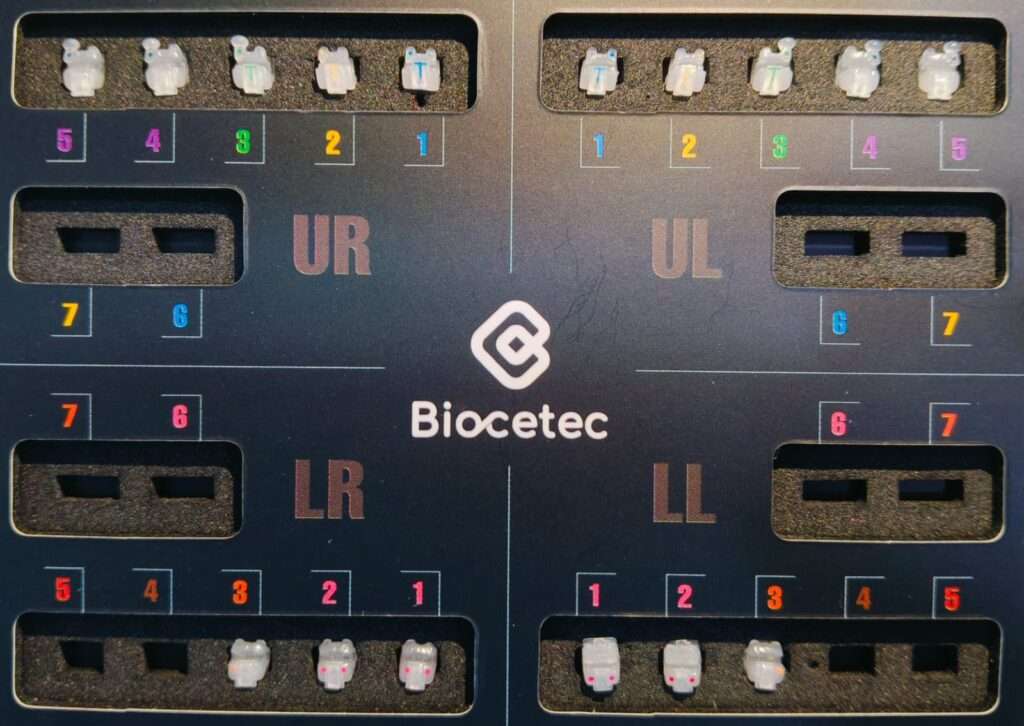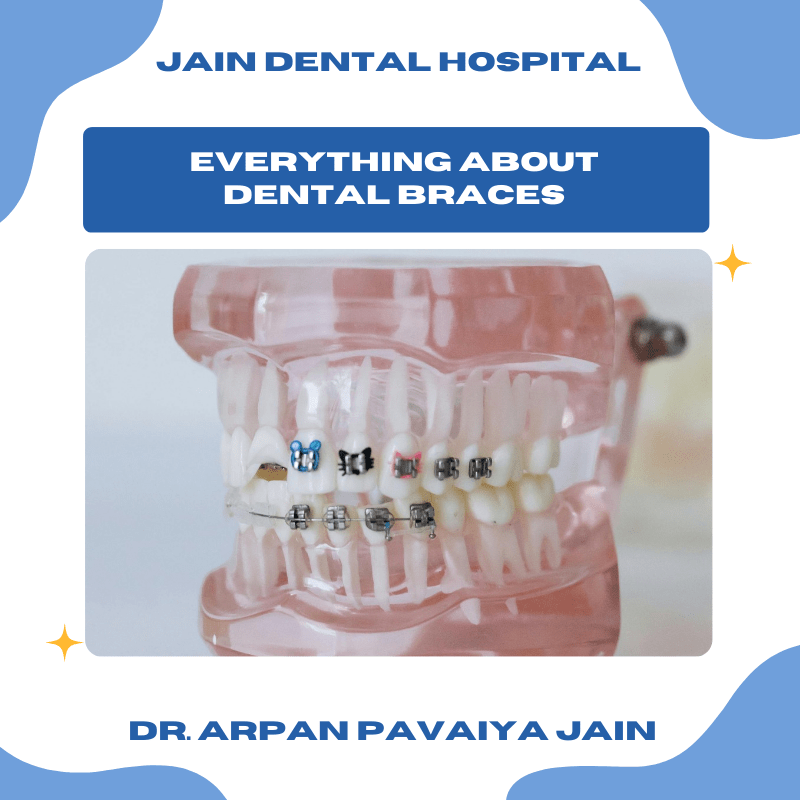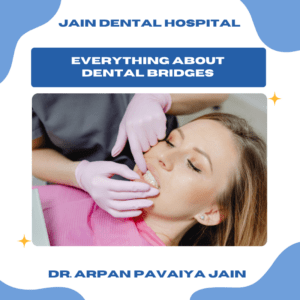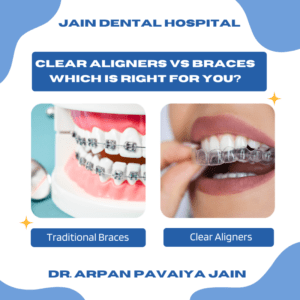Dental Braces: Types, Procedure, Benefits & Costs
Understanding Braces: A Comprehensive Guide
Have you been feeling self-conscious about crooked or misaligned teeth? Are you struggling with jaw pain or difficulty chewing due to an improper bite? Perhaps you’re wondering if braces can help improve your smile and boost your confidence? Or maybe you’re unsure about the options available and how they could fit into your lifestyle? Or If you are think that whether the braces might be the right solution for achieving your perfect smile then you have arrived at the right place.
Dental braces have long been a trusted solution for correcting a variety of orthodontic issues, offering far more than just cosmetic improvements. With advancements in technology, braces are now more effective, comfortable, and aesthetically varied than ever before.
Whether you’re a parent considering dental braces for your child or a young professional planning to enhance your smile, or seeking a solution for dental misalignment, understanding how they work and what to expect can help ease any concerns and prepare you for the path to a confident, healthy smile.
This guide explores who needs braces, when to get them, types of braces, alternative treatments, and essential aftercare tips, helping you take the first step toward achieving a healthier, more confident smile.
What Are Braces and Why Are They Important?
Braces are specialized dental tools used to move teeth into their proper positions by applying gentle, consistent pressure. They are much more than a means of creating a beautiful smile. Braces help correct numerous orthodontic issues, including crooked or crowded teeth, jaw misalignment, overbites, underbites, and gaps between teeth. These adjustments not only improve aesthetics but also enhance chewing function, speech clarity, and overall oral health.
Common Issues Treated with Braces
- Crowding of teeth – where tooth material is more than jaw size leads to poor cleaning of teeth.
- Increased overjet – when upper jaw is quite forward than lower jaw leads to poor looks and mouth breathing.
- Deep bite – when upper teeth cover lower teeth more than 20 percent leads to grinding of teeth or attrition of teeth.
- Cross bite – when upper teeth and lower teeth are malaligned leads to uneven wear of teeth.
- Gaps Between Teeth – leads to increased plaque deposition and increasing spaces.
- Skeletal defects – Due to jaw malalignments leas to poor chewing abilities.
- Speech Difficulties – Dental alignment issues can contribute to lisping or unclear speech.
Understanding these issues is the first step in deciding whether braces are the right choice for you or your loved ones.
Who Needs Braces?
Braces are not exclusive to teenagers—they can benefit people of all ages suffering from specific orthodontic conditions. Below are the common scenarios where braces prove beneficial.
For Kids and Teens
Children as young as age 7 may start orthodontic evaluations to detect and address minor issues before they escalate. Early treatment guides the growth of the jaw and teeth for better alignment.
For Adults
Adults, too, can benefit from braces—even in their later years. Orthodontic advancements like ceramic braces and clear aligners provide less noticeable options for professional settings. Adults often seek braces to correct crowded teeth, gaps, or jaw misalignment.
Key Indicators for Considering Braces
- Visible crooked teeth
- Frequent biting of the cheek or tongue
- Jaw clicking or discomforts
- Difficulty chewing food
If these issues resonate with you, braces could be an integral solution.
The Importance of Early Treatment
Orthodontic treatment during childhood is an essential step toward ensuring long-term dental health and a beautiful smile. Addressing orthodontic concerns early can not only prevent major issues later but also promote proper dental and facial development. Below are some key advantages and considerations for early orthodontic intervention:
Early Detection of Dental Issues
Identifying and addressing dental problems at a young age ensures that they do not progress into more serious concerns. Early detection allows orthodontists to plan proactive treatment tailored to the child’s needs.
Guides Jaw Growth and Tooth Alignment
Early treatment helps guide the growth of the jaw and the alignment of incoming permanent teeth. This minimizes severe crowding or misalignment and ensures proper functionality of the bite.
Prevents Speech and Chewing Issues
Correcting dental issues early can prevent complications with speech and chewing, which are often caused by misaligned teeth or an improper bite. Proper structures foster better oral function.
Corrects Harmful Oral Habits
Habits such as thumb-sucking or tongue-thrusting can lead to misaligned teeth or bite issues. Early treatment trains children out of these habits, preventing long-term effects on their dental structure.
Shortens Treatment Time in the Future
By addressing dental and jaw issues early, the duration and complexity of future orthodontic treatments can often be significantly reduced, saving time and effort as the child grows.
Boosts Self-Confidence
A straighter smile from an early age contributes to healthier self-esteem. Children who feel confident in their appearance are more likely to thrive in social and academic settings.
When Should Parents Consider Early Orthodontic Treatment?
Parents should schedule an orthodontic evaluation for their children by the age of seven, as recommended by orthodontic professionals. At this stage, both baby teeth and permanent teeth are present, allowing orthodontists to assess the need for early treatment effectively.
Early intervention can be a game-changer in preventing long-term dental complications.
Types of Dental Braces
Braces have come a long way in terms of design and functionality. Here are the primary types available today.
Traditional Metal Braces
- Appearance: Visible metal brackets and wires.
- Benefits: Durable, cost-effective, and suitable for severe misalignment.
- Drawbacks: More noticeable than other options.

Ceramic Braces
- Appearance: Tooth-colored or clear brackets for a discreet look.
- Benefits: Less visible than metal braces.
- Drawbacks: Higher cost, potentially more fragile.

Lingual Braces
- Appearance: Attached to the back of teeth, completely hidden from view.
- Benefits: Ideal for those who prioritize aesthetics.
- Drawbacks: More challenging to clean and may be less comfortable initially.
Clear Aligners (e.g., Invisalign)
- Appearance: Transparent, removable plastic trays.
- Benefits: Nearly invisible, easy to remove for eating and brushing.
- Drawbacks: Best suited for mild-to-moderate corrections.

Self-Ligating Braces
- Appearance: Similar to traditional braces but uses a clip instead of elastic ties.
- Benefits: Easier to maintain, reduces friction for faster results.
- Drawbacks: Costs more than traditional braces

Your orthodontist will help guide you to the braces that suit your specific needs and lifestyle.
Alternative Orthodontic Treatments
- Clear Aligners (e.g., Invisalign, ClearCorrect): These are nearly invisible, removable trays that progressively straighten teeth. They are popular for their discreet appearance and convenience, perfect for adults and teens seeking a less noticeable option.
- Retainers for Minor Adjustments: Retainers can sometimes be used for correcting small alignment issues or preventing teeth from shifting after other orthodontic treatments. They are simple, cost-effective, and easy to wear.
- Palatal Expanders (For Children & Teens): Designed to widen the upper jaw, these are often recommended for young patients to correct bite issues, create space for teeth, and improve alignment as the jaw grows.
- Veneers (For Aesthetic Corrections): Thin, custom-made shells that cover the front surface of teeth to create a flawless appearance. Veneers can enhance the shape, color, and size of teeth, ideal for those focusing on cosmetic improvements.
- Dental Bonding: A non-invasive procedure that uses a tooth-colored resin to correct minor imperfections like gaps, chips, or discoloration. It’s a quick and affordable option to enhance your smile.
- Jaw Surgery (Orthognathic Surgery): For severe jaw misalignment or bite issues, this surgical option corrects structural problems, improving functionality and facial symmetry. It’s typically combined with braces for the best results.
Choosing an Orthodontist
Selecting the right orthodontist is a critical step in achieving a healthy, confident smile. With so many factors to consider, it’s essential to evaluate your options carefully to ensure you’re receiving the best care possible. Below are the key aspects to keep in mind when making your decision:
- Qualifications and Experience: Ensure the orthodontist is fully licensed and has extensive experience in orthodontic care. Look for additional certifications and continuing education that demonstrate their commitment to staying updated on advancements in the field.
- Technology and Treatment Options: Check if the practice uses modern technology, such as 3D imaging, digital scanners, or clear aligners, to offer a variety of treatment options that meet different needs.
- Patient Reviews and Testimonials: Research online reviews and ask for patient testimonials to get insights into the experiences of past and current patients. Positive feedback can help build trust in the orthodontist’s expertise.
- Consultation and Treatment Plan: Many orthodontists offer initial consultations. This is your opportunity to discuss your concerns, understand the proposed treatment plan, and ask any questions you may have.
- Cost, Insurance, and Payment Plans: Orthodontic treatment can be a significant investment. Ensure you understand the costs, what your insurance covers, and whether the practice offers flexible payment plans to make treatment more affordable.
- Location and Office Environment: Choose a practice that’s conveniently located and has a welcoming, clean office environment. Friendly staff and a comfortable setting can make a big difference in your overall experience.
How Dental Braces Work
Understanding how dental braces work can demystify the process and help you feel more confident about your orthodontic treatment. Braces are designed to gradually shift your teeth into their ideal positions using a combination of pressure and precision.
- Continuous Pressure to Realign Teeth: Braces work by applying gentle, continuous pressure to your teeth over an extended period. This pressure encourages teeth to move into their desired positions, while the underlying bone remodels to support the new alignment.
- Role of Brackets: Brackets are small, sturdy components that are bonded to the front of each tooth. These act as anchors for the rest of the braces system, holding archwires in place and directing force to individual teeth.
- Function of Archwires: The archwire is a thin metal wire that connects all the brackets. It plays a critical role in guiding the movement of teeth by creating tension and pressure when adjusted during orthodontic visits.
- Importance of Ligatures: Ligatures, or tiny rubber bands, are used to secure the archwire to the brackets. These can also influence the direction and intensity of force on specific teeth, contributing to precise adjustments.
Each component of braces works together harmoniously to create a healthier, straighter smile over time. Regular adjustments ensure progress and help refine the alignment process as treatment continues.
The Orthodontic Treatment Process
Orthodontic treatment is a carefully planned process that ensures optimal results for achieving a healthy and aligned smile. Each step plays a vital role in guiding teeth into their proper positions while addressing individual needs and goals. Below is an overview of the key stages involved in orthodontic treatment:
- Initial Consultation: During this initial visit, the orthodontist evaluates the patient’s oral health, discusses concerns, and examines teeth alignment through physical assessments and imaging tools like X-rays. This step helps determine if orthodontic treatment is necessary.
- Treatment Planning: Based on the evaluation, the orthodontist creates a personalized treatment plan. This includes selecting the type of braces or aligners, estimating treatment duration, and addressing any specific dental issues.
- Application of Braces: If braces are chosen, this phase involves attaching brackets to the teeth and threading the archwire through. The process is typically painless, and patients receive instructions on how to care for their braces.
- Adjustments and Monitoring: Regular follow-up appointments are scheduled to adjust the braces, ensuring teeth shift correctly over time. These visits allow the orthodontist to monitor progress and make any necessary modifications.
- Retention Phase: Once the active treatment is complete, the braces are removed, and a retainer is provided to maintain the new alignment. Wearing the retainer as instructed is crucial to prevent teeth from shifting back.
Understanding these steps helps patients stay informed about what to expect during their orthodontic treatment, ensuring a smoother and more successful experience.
Duration of Treatment
The length of orthodontic treatment can vary significantly from one patient to another, depending on individual circumstances and the type of braces used. Understanding the factors that influence treatment duration and the typical timelines can help patients set realistic expectations.
- Factors Influencing Treatment Length:
- The severity of misalignment plays a major role; minor adjustments may take less time, while complex cases require extended treatment.
- Patient compliance is critical. Consistently following the orthodontist’s instructions, including attending regular appointments and properly using elastic bands or other appliances, can significantly affect treatment timelines.
- Typical Treatment Timelines for Different Types of Braces:
- Traditional metal braces usually take 18-24 months to achieve the desired results.
- Ceramic braces, although less noticeable, tend to have similar timelines as metal braces.
- Clear aligners like Invisalign often range between 12-18 months, depending on adherence to the prescribed wear schedule.
- Lingual braces, which are placed behind the teeth, may require additional time due to the complexity of adjustments.
By recognizing these factors and timelines, patients can work collaboratively with their orthodontist to achieve successful and timely results.
Caring for Your Braces
Proper care ensures successful treatment and minimizes risks during your orthodontic journey.
Essential Tips
- Oral Hygiene Practices – Brush and floss after every meal using tools like a soft toothbrush and orthodontic flossers.
- Dietary Adjustments – Avoid hard, sticky, or chewy foods to prevent damaging your braces. Cut fruits and vegetables into small, manageable pieces.
- Handling Discomfort – Use orthodontic wax to alleviate any irritation caused by brackets or wires. Over-the-counter pain relievers can help during adjustments.
Foods to Enjoy and Avoid with Braces
- Safe Foods to Eat:
- Soft fruits like bananas, berries, and oranges
- Cooked vegetables such as steamed broccoli or carrots
- Dairy products like yogurt, cheese, and milk
- Soft grains including rice, pasta, and oatmeal
- Tender proteins such as eggs, fish, and shredded chicken
- Soft snacks like pudding, applesauce, or smoothies
- Foods to Avoid:
- Hard foods like nuts, pretzels, and raw carrots
- Sticky treats such as caramel, toffee, or chewing gum
- Chewy foods like bagels, licorice, or gummy candies
- Crunchy snacks like chips, popcorn, or ice
- Whole fruits such as apples (unless cut into small pieces)
- Tough meats like beef jerky or ribs
By making mindful food choices, you can protect your braces and ensure a smoother treatment process.
Staying consistent with these practices will make your treatment smoother and more effective.
Benefits of Getting Braces
The advantages of braces go far beyond aesthetic improvements.
Functional Benefits
- Improved Oral Hygiene – Straighter teeth are easier to clean, reducing the risk of cavities and gum disease.
- Enhanced Speech and Chewing – Address issues that impede clear speech and make eating uncomfortable.
- Bone and Joint Health – Staves off jaw misalignment-related issues like TMJ.
Confidence Boost
A straight smile often translates to higher self-confidence, positively impacting personal and professional interactions.
Long-Term Impact
Investing in braces means fewer dental problems, less wear and tear on enamel, and better oral health.
Potential Risks and Complications
While braces offer incredible benefits, it’s important to understand that they come with potential risks and challenges. Knowing what to expect and how to address these issues can help ensure a smoother treatment experience and maintain your overall dental health.
- Possible Discomfort During Treatment – It’s common to experience some pain or soreness, especially after adjustments. Over-the-counter pain relievers, orthodontic wax, and warm saltwater rinses can help manage this discomfort.
- Risks of Tooth Decay or Gum Issues – Failing to maintain proper oral hygiene can lead to plaque buildup, increasing the risk of cavities and gum disease. Regular brushing, flossing, and dental checkups are crucial to prevent these issues.
- Soft Tissue Irritation – Braces may occasionally irritate the inner cheeks or lips. Using orthodontic wax or specialized orthodontic products can alleviate this irritation.
- Prolonged Treatment Times – Not following your orthodontist’s instructions, such as skipping appointments or not wearing rubber bands, can extend the treatment duration. Adhering to guidelines will help ensure progress stays on track.
Understanding these risks and being proactive about them can significantly improve your overall experience with braces, setting you up for long-term success and a healthier smile.
Factors to Consider for Braces Cost
When planning for braces, it’s important to understand the various factors that influence their overall cost. Preparing in advance and being informed about your options can make the process more manageable and help you budget effectively. Below are some key elements to consider:
- Type of Braces – Traditional metal braces, ceramic braces, lingual braces, and clear aligners each come with different price ranges due to variations in materials, appearance, and customization needed. Typically, clear aligners or lingual braces can cost more than traditional options.
- Duration of Treatment – The length of time you need to wear braces can affect the cost. Longer treatment plans often incur higher fees as they require extended care and adjustments over time.
- Insurance Coverage – Many dental insurance plans offer partial coverage for orthodontic treatments. It’s essential to check with your provider to see what portion of the costs might be covered and what out-of-pocket expenses to anticipate.
- Payment Plans – Most orthodontists provide flexible payment plans to make braces more affordable. These plans allow you to spread the payments across monthly instalments, reducing the financial burden.
Understanding these factors can help you make informed decisions when choosing the right orthodontic treatment for both your health and budget. It’s advisable to discuss all potential costs upfront with your orthodontist to avoid surprises and ensure a smooth process.
The cost of braces can vary depending on the type and treatment duration.
- Metal Braces: Check Braces and Aligners Service Page
- Ceramic Braces: Check Braces and Aligners Service Page
- Clear Aligners: Check Braces and Aligners Service Page
Many orthodontists offer payment plans, and some dental insurance plans may partially cover orthodontic care. Be sure to check with your provider.
Conclusion
The Journey to a Straightened Smile
Dental braces provide a pathway to better oral health, confidence, and long-term functionality. Understanding key aspects—like who can benefit, the types of braces, and proper aftercare—helps make the process less daunting.
Every smile is unique. That’s why consultation with a qualified orthodontist is essential for a personalized treatment plan. Take charge of your dental health today and make an investment that will last a lifetime.
Your Smile Deserves the Best - Book a consultation with the top dental doctor in Indirapuram & Ghaziabad!
A healthy, confident smile can transform your life. Don’t settle for anything less than the best. If you’re searching for the best dental clinic in Indirapuram Ghaziabad, look no further than Jain Dental Hospital.
Take the first step toward a brighter smile. Book your appointment today and experience the difference! Call us at +91-9582535204 or visit our website at www.jaindentistdelhi.com.

Dr. Arpan Pavaiya Jain, Director of Jain Dental Hospital, Indirapuram, Ghaziabad is a renowned Prosthodontist and Implantologist with over 20 years of expertise in advanced dentistry. A graduate of the prestigious King George’s Medical College Lucknow, he has performed more than 20,000 successful dental implant procedures. Dr. Jain leads a team of skilled professionals, offering state-of-the-art treatments in dental implants, clear aligners, cosmetic dentistry, orthodontics, and more. Known for his personalized care and commitment to excellence, he has earned a reputation as a trusted dental expert in Indirapuram, Ghaziabad.





